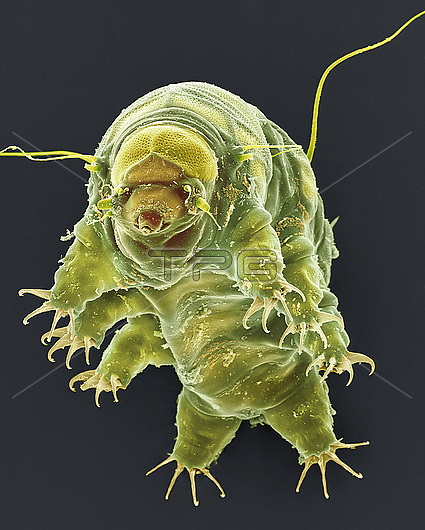
Coloured scanning electron micrograph (SEM) of a tardigrade, or water bear, (Echiniscus sp.) from China. Tardigrada is an obscure phyla of invertebrates located between the nematodes (roundworms) and the arthropods (crustacea, insects, and ticks). Tardigrades are microscopic aquatic animals that need water to live. Without water they shrivel into a cask stage and survive long periods of desiccation in a stage called cryptobiosis. Tardigrades are found in marine, freshwater and semi-aquatic terrestrial habitats. Mosses, lichens, leaf litter, soil and even the grains of sand on a beach are examples of such habitats. They are small, 0.2-0.5 mm in length, with 5 body segments and 4 pairs of legs. They breathe through their cuticle and have a hemocoel for circulation. Water bears feed on the fluids of plant and animal cells. They have stylets which allow them to pierce plant or animal cells. Cryptobiosis is of great interest in the study of cryogenics and tardigrades have been subjected to laboratory experiments that have verified their ability to survive. Magnification: x80 when shortest axis printed at 25 millimetres.
| px | px | dpi | = | cm | x | cm | = | MB |
Details
Creative#:
TOP27877300
Source:
達志影像
Authorization Type:
RM
Release Information:
須由TPG 完整授權
Model Release:
No
Property Release:
No
Right to Privacy:
No
Same folder images:

 Loading
Loading